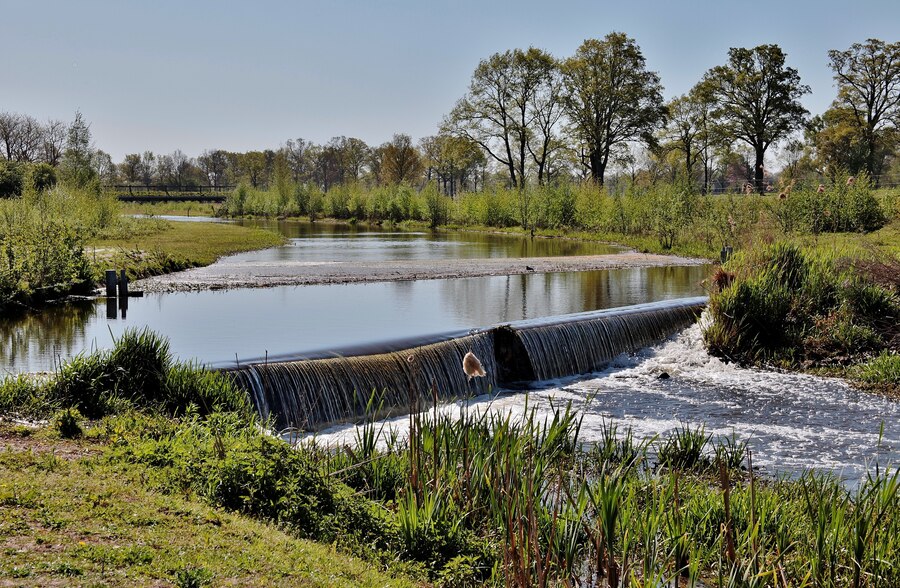
Micro-hydropower solutions for remote areas
In many remote areas, access to electricity is a persistent challenge. Extending national power grids to isolated regions is often prohibitively expensive and logistically complex. In these contexts, micro-hydropower offers an efficient, cost-effective way to bring clean, reliable energy to communities that might otherwise go without. By tapping into small rivers or streams, micro-hydropower systems generate local power without the extensive infrastructure of traditional dams, making them ideal for rural areas. Here’s a look at how micro-hydropower systems work and why they are transforming energy access for remote communities.
Understanding micro-hydropower
Micro-hydropower systems are small-scale hydroelectric setups that produce up to 100 kilowatts of power. Unlike large hydroelectric dams, micro-hydro systems don’t require extensive water reservoirs or major changes to the landscape. They work by channeling a portion of river or stream water through a turbine, which then converts the energy of flowing water into electricity. The power generated is typically sufficient to meet the needs of small communities, schools, or farms.
Because micro-hydro systems don’t require large dams, they can operate with minimal environmental disruption. They also harness the continuous flow of rivers, providing a stable energy source that operates day and night. For many remote communities, this consistency is crucial, as it allows for the use of electric lighting, water pumps, and basic appliances, dramatically improving quality of life.
Advantages of micro-hydropower for remote areas
One of the primary benefits of micro-hydropower is its low environmental impact. Since these systems divert only a portion of river flow, they don’t interfere significantly with aquatic ecosystems. Unlike large dams that can alter river courses, micro-hydro installations maintain the natural flow, preserving habitats and minimizing disruption to local wildlife. This makes micro-hydro an eco-friendly choice for rural areas that depend on rivers for fishing, farming, and water resources.
Micro-hydropower is also highly cost-effective. While initial setup requires investment, maintenance costs are low, and the systems often last for decades. Many communities find that micro-hydro setups pay for themselves over time, especially compared to the high costs of diesel generators or fuel-based alternatives. Additionally, because they don’t require fuel, micro-hydro systems reduce dependence on costly, hard-to-access fuel sources, making energy more affordable for local residents.
These systems are particularly suited to remote areas where other renewable options, like solar or wind, may be less reliable due to climate or geographic conditions. Rivers in mountainous or forested regions provide a steady, predictable source of energy, which is often essential for communities with limited energy alternatives.
How micro-hydropower impacts local communities
By bringing reliable electricity to remote areas, micro-hydropower transforms daily life. For example, access to electricity extends productive hours, allowing students to study after dark and businesses to operate beyond daylight. Basic infrastructure, such as lighting and refrigeration, becomes available, improving food preservation and healthcare services.
In regions where agriculture is the main source of income, micro-hydropower supports irrigation and mechanized farming. Electric water pumps can irrigate fields more efficiently, enhancing crop yields and providing food security. Mechanized processing also helps farmers increase productivity, potentially opening access to broader markets and boosting the local economy.
Micro-hydro systems also enable local economic development. With reliable power, small enterprises like carpentry, food processing, and weaving can operate sustainably. This energy independence fosters job creation and provides young people with employment opportunities within their communities, reducing the need to migrate to urban centers.
Community involvement and ownership
One of the unique aspects of micro-hydropower is the potential for community ownership and involvement. In many cases, these systems are built, operated, and maintained by local residents, with training provided by government or non-profit organizations. This local involvement ensures that communities develop a vested interest in the upkeep of their energy systems, leading to better long-term maintenance and sustainability.
Involving communities in the design and operation of micro-hydropower systems also builds skills that empower residents. Many programs offer technical training in turbine maintenance, electrical wiring, and even system expansion, fostering a sense of ownership and responsibility. This knowledge transfer strengthens community resilience and provides locals with valuable skills that they can apply in other areas of life.
Challenges of micro-hydropower in remote areas
Despite its benefits, implementing micro-hydropower is not without challenges. One major hurdle is the initial cost. While micro-hydro systems are generally more affordable than extending the grid, they still require significant upfront investment. For many remote communities, financing this investment can be difficult without support from governments, NGOs, or international aid programs. Securing funding is often essential for these projects to get off the ground.
Access to technical expertise can also be a barrier. Many rural areas lack professionals trained in hydropower design, installation, and maintenance. To address this, development agencies and organizations often provide training to ensure locals can maintain the systems themselves. Without these training programs, communities may struggle with technical challenges that could disrupt power production.
Environmental factors, such as seasonal water flow, can also affect micro-hydro systems. In areas with significant dry seasons, rivers may drop too low to generate power year-round. However, some systems are designed to accommodate seasonal changes, storing energy or diverting flow during peak water availability to extend functionality throughout the year.
Future prospects for micro-hydropower
Micro-hydropower holds promising potential for remote regions as technology advances. Newer turbine designs are more efficient, compact, and easier to maintain, making them even more suitable for rugged, isolated areas. Hybrid systems that combine micro-hydro with solar or battery storage are also emerging, providing backup power and ensuring electricity access during seasonal fluctuations.
As awareness of micro-hydropower’s benefits grows, government and NGO support is likely to increase. Investment in renewable energy is expanding, and micro-hydro aligns with many goals to promote sustainable, community-based power solutions. With improved funding options and a growing emphasis on rural electrification, micro-hydropower could become a primary energy solution for many remote areas, paving the way for sustainable development where it’s needed most.
In regions around the world, micro-hydropower is not only an energy solution but a tool for empowerment, providing isolated communities with the resources to thrive independently. By leveraging local rivers, communities gain access to electricity that fuels progress and opens doors to opportunity, demonstrating the transformative impact of small-scale renewable energy.
